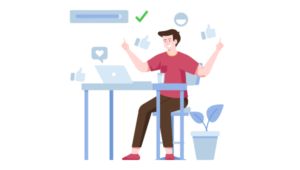Accessibility

You submit a form—but get no feedback. Wha? Did it submit? Learn how to make sure your UI elements provide feedback to users—so that you don't lose them!

Michiel Mulders explains the meaning of positive reinforcement in terms of UX, and offers practical tips for improving the experience of website visitors.

Michiel Mulders discusses the importance of microcopy for enhancing UX, and offers five tips for helping users better understand your site.

Improve your user experience with machine learning. Learn five strategies where machine learning solutions can realistically solve design problems today.

Michiel introduces five best practices you can use to provide a more learnable interface to your users, from consistency to familiarity and storification.

In this ultimate ADA compliance guide, we’ve laid out the things your web design agency needs to know to make accessible websites.

Rhiana Heath looks at Bootstrap accessibility issues with Bootstrap 4, showing how developers can test for problems and what can be done to fix them.

Giannis introduces us to Microsoft's new design language — Fluent Design System — and explains how to implement its design concepts into Windows UWP apps.

Daniel Schwarz discusses UX writing, why it's important for designers to be excellent writers, and how punctuation can make copy look and sound appealing.

Craig Buckler takes a renewed look at why, in 2017, some users might disable JavaScript and asks if progressive enhancement is still worth the effort.

Preston Pierce shows us how to carefully optimise contrast levels and choose colors that boost usability, accessibility and conversions.

Abbas Rajani shows us how to offer users a better mobile UX by optimizing the layout and content of long-scrolling mobile websites.

Pavels Jelisjevs looks at aXe, a JS library that scans your website for a11y issues. Learn how to do automated accessibility checking via your test runner.

GIFs are the jokers of the web image formats – usually funny and playful. But can they be turned into a dangerous weapon in the right situation?
Yaphi walks you step-by-step through creating a slideshow with JavaScript and CSS, with practical tips on ensuring accessibility for all.
Sometimes it helps to think of SVG, not as an 'image format', but as a 'recipe'. And once you *really* know a recipe, you can start to change it.
Accessible design is more that just adding some ALT tags. Anita has some wonderful insights on how you can improve your approach to accessible design.
Being able to share your designs in Sketch with very little effort is hugely beneficial to your team. Daniel show us more than one way to do it!
Ada Ivanoff highlights 11 of her favorite tutorials on mobile design for iOS, Android, cross-platform and mobile web designers.
Could the characteristics that make us good designers – good eyesight & web savviness – actually make it harder for us to empathize with our users?
Ssometimes we need to be mindful of how classic print techniques translate to digital. Pull Quotes are a good example.
Talking and reading machines are almost old hat in the age of Siri, but people have been trying to convert text to sound since the first world war.
Mobile devices present a whole new range of accessibility challenges. Gian looks the successes and failures of WCAG2.
As more learning platforms move online – both government and private – the importance of keeping these systems open to all becomes even more pressing.

Fonts have been a convenient place to store our vector icons – but is it the *right* place? Massimo asks if it's time to move to SVG.

Conventional wisdom says that the frustration of masked passwords is worth it to keep us safe from hoods and hustlers. But does it actually help?
Vectors are a great option for icons but the decision between icon fonts and SVG is a hard one. Now Seren Davies has raised some new issues with icon fonts.

When you tick the 'show password' box on a site you expect to be able to see your password. But what happens for users with screenreaders? James knows.
Donald Dragoti demonstrates how to use some of Android's accessibility features to make your apps usable by everyone.
You've most certainly seen articles and tutorials discussing the "hows" of accessibility. But have you considered the "whys"? Shaumik considers.